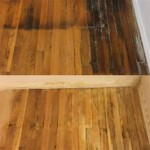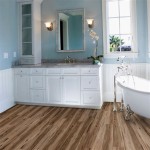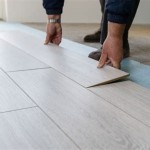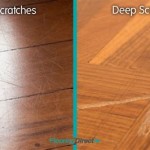White Tile Flooring Design: A Comprehensive Guide
White tile flooring has long been a staple in interior design, prized for its versatility, clean aesthetic, and ability to brighten any space. From minimalist modern homes to classic, elegant interiors, white tile offers a blank canvas upon which a myriad of design styles can be realized. This article explores the diverse applications of white tile flooring, examining its benefits, design considerations, maintenance requirements, and various types available.
The enduring popularity of white tile stems from its inherent properties. White inherently reflects light, making it an ideal choice for areas that lack natural illumination. This reflective quality can visually expand a space, creating an illusion of greater size and openness. Moreover, white provides a neutral backdrop that complements virtually any color scheme or furniture style. The simplicity of white allows other design elements, such as artwork, rugs, and accessories, to take center stage.
Beyond aesthetics, white tile is a practical choice for flooring. It is generally durable, water-resistant (depending on the type of tile), and easy to clean. These characteristics make it suitable for high-traffic areas like hallways, kitchens, and bathrooms. Furthermore, the smooth, non-porous surface of many white tiles resists the growth of mold and bacteria, contributing to a healthier living environment.
Key Point 1: Exploring Different Types of White Tile
The term "white tile" encompasses a broad range of materials, each with its distinct properties and aesthetic qualities. Understanding these differences is crucial for selecting the appropriate tile for a specific application. The most common types include ceramic, porcelain, marble, and vinyl.
Ceramic tile is a widely used option, known for its affordability and versatility. It is manufactured from clay that is fired at high temperatures, resulting in a durable and water-resistant material. Ceramic tile is available in a variety of sizes, shapes, and finishes, including glossy, matte, and textured surfaces. While relatively easy to install, ceramic tile is generally less dense than porcelain tile, making it more susceptible to chipping and cracking under heavy impact.
Porcelain tile is a denser and more durable alternative to ceramic. It is also made from clay but fired at higher temperatures, resulting in a less porous material with superior water resistance. Porcelain tile is particularly well-suited for high-traffic areas and outdoor applications due to its resistance to frost and staining. The higher density of porcelain tile also makes it more resistant to scratching and chipping. Porcelain tiles are often more expensive than ceramic tiles but offer a longer lifespan and greater durability.
Marble tile offers a luxurious and elegant aesthetic. A natural stone, marble is prized for its unique veining patterns and polished surface. White marble, in particular, exudes a sense of timeless sophistication. However, marble is a relatively porous material and requires sealing to prevent staining and water damage. It is also susceptible to scratching and etching from acidic substances. Marble is generally more expensive than ceramic or porcelain tile and requires more careful maintenance.
Vinyl tile offers a more budget-friendly and resilient option. Vinyl tile is made from synthetic materials and is available in a wide variety of colors and patterns, including realistic imitations of stone and wood. Vinyl tile is highly water-resistant, easy to clean, and comfortable underfoot. It is also relatively easy to install, making it a popular choice for DIY projects. However, vinyl tile is less durable than ceramic, porcelain, or marble and may be prone to scratching and denting under heavy use.
Key Point 2: Design Considerations for White Tile Flooring
While white tile is inherently versatile, careful consideration should be given to several design factors to achieve the desired aesthetic effect. These factors include tile size, shape, grout color, layout pattern, and finish.
Tile size can significantly impact the overall appearance of a room. Larger tiles can create a sense of spaciousness and continuity, while smaller tiles can add texture and visual interest. Very large format tiles, often exceeding 24 inches in size, offer a minimalist, seamless look. Smaller mosaic tiles, on the other hand, can be used to create intricate patterns and designs. The choice of tile size should also consider the size of the room; larger tiles may overwhelm a small space, while smaller tiles may appear too busy in a large room.
Tile shape further contributes to the overall design. Square and rectangular tiles are the most common shapes, offering a classic and versatile look. However, other shapes, such as hexagonal, octagonal, or even uniquely shaped tiles, can add a distinctive touch. The choice of tile shape should complement the overall architectural style of the space. For example, subway tiles, rectangular tiles typically laid in a staggered pattern, are a popular choice for kitchens and bathrooms, adding a touch of vintage charm.
Grout color plays a crucial role in the final appearance of the tile floor. White grout offers a seamless and minimalist look, blending seamlessly with the white tiles. This can be particularly effective with larger format tiles, creating a sense of expansiveness. However, white grout can be challenging to maintain, as it is prone to staining and discoloration. Dark grout, such as gray or black, provides a striking contrast with white tiles, highlighting the individual tiles and creating a more defined pattern. Dark grout is also more forgiving in terms of staining, making it a practical choice for high-traffic areas.
Layout pattern refers to the arrangement of tiles on the floor. A straight lay pattern, where tiles are aligned in a grid, is the most common and simplest option. A staggered pattern, where tiles are offset, adds visual interest and can create a more dynamic feel. Herringbone and chevron patterns offer a more sophisticated and intricate look. The choice of layout pattern should consider the overall style of the space and the desired level of visual interest. More complex patterns may require more effort and expertise during installation.
Tile finish also influences the aesthetic and functional properties of the floor. Glossy finishes reflect light and create a bright and polished look. They are relatively easy to clean but can be slippery when wet. Matte finishes offer a more subtle and understated look. They are less slippery than glossy finishes and provide better traction. Textured finishes add visual interest and can provide enhanced slip resistance. The choice of tile finish should consider the intended use of the space and the desired level of safety and practicality.
Key Point 3: Maintaining White Tile Flooring
Maintaining white tile flooring is essential to preserving its aesthetic appeal and extending its lifespan. Regular cleaning and preventative measures can help prevent staining, scratching, and other damage.
Regular cleaning is crucial for maintaining the brightness and cleanliness of white tile. Sweeping or vacuuming regularly removes loose dirt and debris that can scratch the tile surface. Mopping with a mild detergent and warm water effectively removes spills and stains. Avoid using harsh chemicals or abrasive cleaners, as these can damage the tile surface and grout. For stubborn stains, a paste of baking soda and water can be applied to the affected area and left for a few minutes before rinsing.
Grout is particularly susceptible to staining and discoloration. To maintain the cleanliness of grout, regular cleaning with a grout brush and a specialized grout cleaner is recommended. Alternatively, a mixture of bleach and water can be used to lighten stained grout. However, caution should be exercised when using bleach, as it can damage some tile surfaces. Grout sealers can also be applied to protect the grout from staining and water damage. Sealers should be reapplied periodically, according to the manufacturer's instructions.
Preventative measures can also help extend the lifespan of white tile flooring. Using rugs or mats in high-traffic areas can protect the tile surface from scratches and wear. Placing furniture pads under furniture legs can prevent scratching and denting. Promptly cleaning up spills can prevent staining and water damage. Avoid dragging heavy objects across the tile floor, as this can cause scratches and cracks.
For marble tile, special care is required to prevent staining and etching. Marble should be sealed regularly to protect it from water damage and staining. Acidic substances, such as lemon juice or vinegar, should be cleaned up immediately to prevent etching. Polishing marble periodically can help maintain its shine and luster.
By understanding the different types of white tile, carefully considering design factors, and implementing proper maintenance practices, one can create a beautiful and durable white tile floor that enhances the aesthetic and functional value of any space.

Carrara Design Ceramic Polished White Marble Looking Porcelain Floor Tile

White Tiles By Kajaria S No 1 Tile Company

40 White Floor Tiles For Your Living Room Bathroom

Calacatta White Gloss Floor Tiles Grey Vein Design Direct Tile Warehouse Living Room Other By Houzz

Black And White Floor Tiles Manufacturers Suppliers Whole Hanse

40 White Floor Tiles For Your Living Room Bathroom

White Floor Tile Ideas For Your Modern Home Interior

White Tiles By Kajaria S No 1 Tile Company

White Marble Flooring Ideas For Any Style Budget Stone Tile Depot

White Tiles For Floor Design Ideas Your Aesthetic Home
Related Posts








